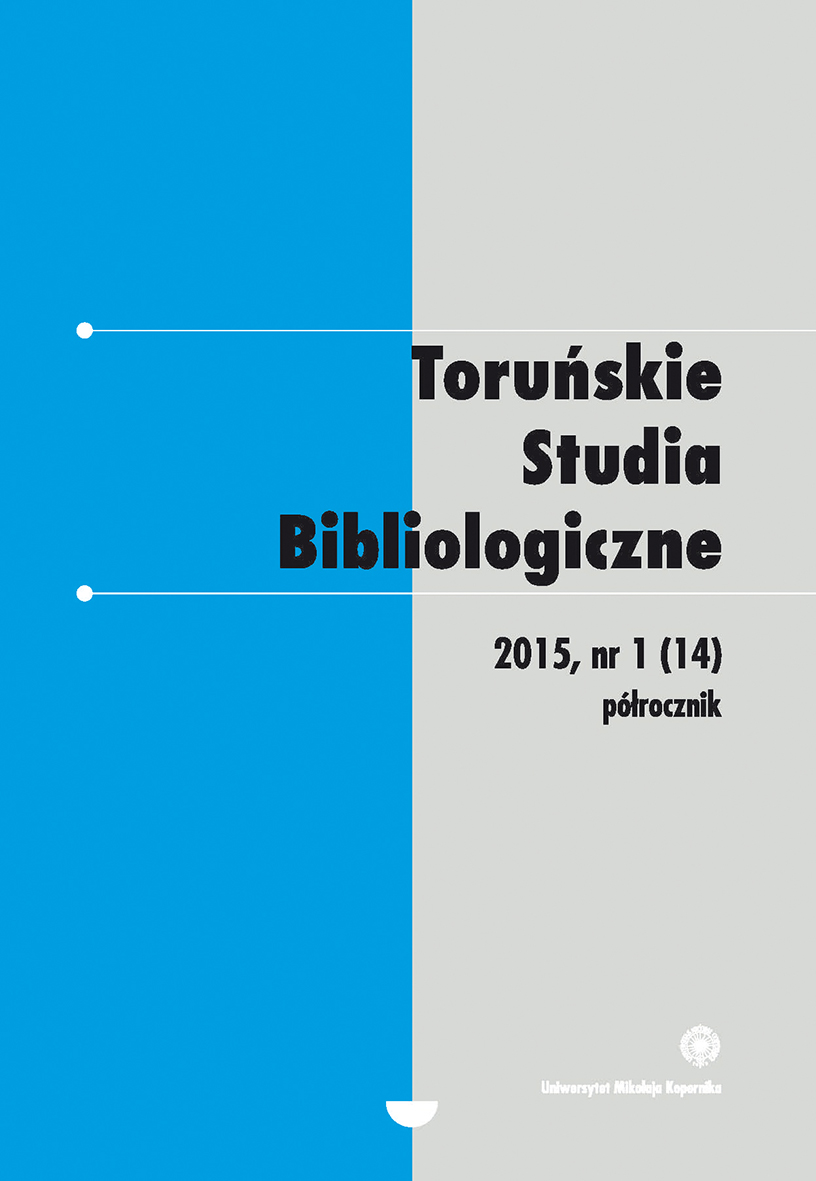How to use research results in creating typographic messages?
DOI:
https://doi.org/10.12775/TSB.2015.003Keywords
function, legibility, motivation, readability, science research, typographic message, typographyAbstract
What kind of scientifically proven arguments can be used by a typographer to create an effective message? On which elements of visual language, does the typographer have a full, partial or minimal influence in the process of building meaning in the mind of the recipient? Finally, how to work with huge number of limitations, incertitude and awareness of the limited influence on the quality of communication? Cognitive psychologists and other researchers leave no illusions and claim that the sender of the message in most cases does not know how it has been read by the receiver. Despite this, there are research results (not necessarily dedicated to typography) that could serve as important advice to all those involved in the creation of an effective typographic message. The article shows how some of these results could be implemented into typographic practice. Likewise, there is an attempt to systematize inferences for research concentrated on legibility. Also, some areas are suggested where the typographer has full or partial impact on the quality of communication. Last but not least, the article discusses which issues are worth paying attention to in analysis of the results in the context of their usefulness in typography. In this aspect, more rational and creative approach to typography is suggested as well as the need to develop a methodology for designing effective typographic communication.References
Beier Sophie, Reading Letters. Designing for Legibility, London 2012.
Bringhurst Robert, Elementarz stylów w typografii, przekł. Dorota Dziewońska, Kraków 2007.
Chi-Hang Tam Keith, Typograficzny pejzaż Wolfganga Weingarta, tł. Ewa Hearfield, Jacek Mrowczyk [online]. 2+3D [dostęp 30 czerwca 2015]. Dostępny w World Wide Web: http://www.2plus3d.pl/artykuly/typograficzny-pejzaz-wolfganga-weingarta/strona:1.
Felici James, Kompletny przewodnik po typografii. Zasady doskonałego składania tekstu, przeł. Marcin Kotwicki, Paweł Biłda, Gdańsk 2006.
Gleick James, Informacja. Bit, wszechświat, rewolucja, tł. Grzegorz Siwek, Kraków 2012.
Kahneman Daniel, Pułapki myślenia, tł. Piotr Szymczak, Poznań 2012.
Larson Kevin, Picard Rosalind, The Aesthetics of Reading [online] [dostęp 30 czerwca 2015]. Dostępny w World Wide Web: http://affect.media.mit.edu/pdfs/05.larson-picard.pdf.
Lenk Krzysztof, Projekty i bazgroły, Gdańsk 2010.
Oberoi Ankit, How Typography Affects Readers [online]. Adpushup [dostęp 30 czerwca 2015]. Dostępny w World Wide Web: http://www.adpushup.com/blog/how-typography-affects-readers/.
Pelli Denis G., Tillman Katharine A., Parts, Wholes, and Context in Reading: A triple Dissociation. PLoS ONE [online] 2 (8): 2007, e680 [dostęp 30 czerwca 2015]. Dostępny w World Wide Web: http://www.plosone.org/article/info%3Adoi%2F10.1371%2Fjournal.pone.0000680.
Richaudeau Francois, Podręcznik typografii i łamania kolumn, czyli sztuki drukarskiej, tł. Anna Lipska, Warszawa 1997.
Rosenfeld Louis, Morville Peter, Architektura informacji w serwisach internetowych, tł. Krzysztof Masłowski, Tomasz Jarzębowicz, Gliwice 2002.
Tinker Miles Albert, Podstawy efektywnego czytania, tł. Krystyna Dudziak, Warszawa 1980.
Zachrisson Bror, Studia nad czytelnością druku, tł. Krystyna Chocianowicz, Jan Hyc, Warszawa 1970.
Downloads
Published
How to Cite
Issue
Section
Stats
Number of views and downloads: 806
Number of citations: 0



